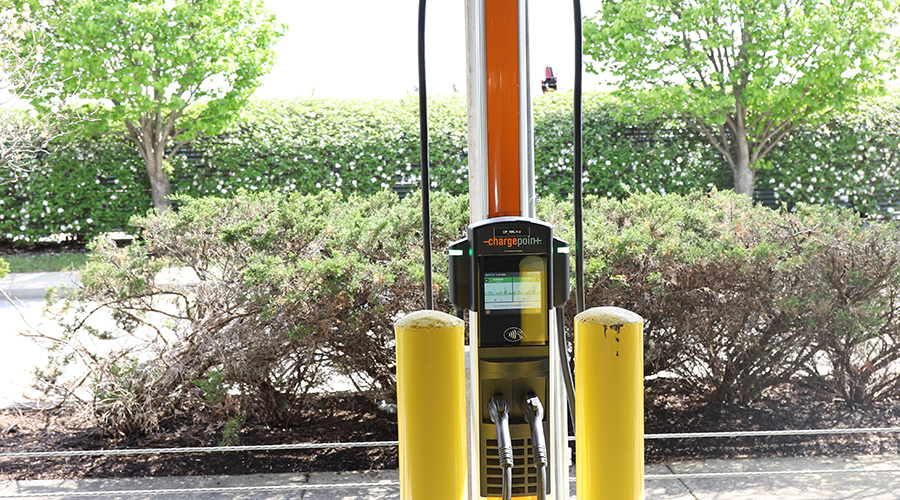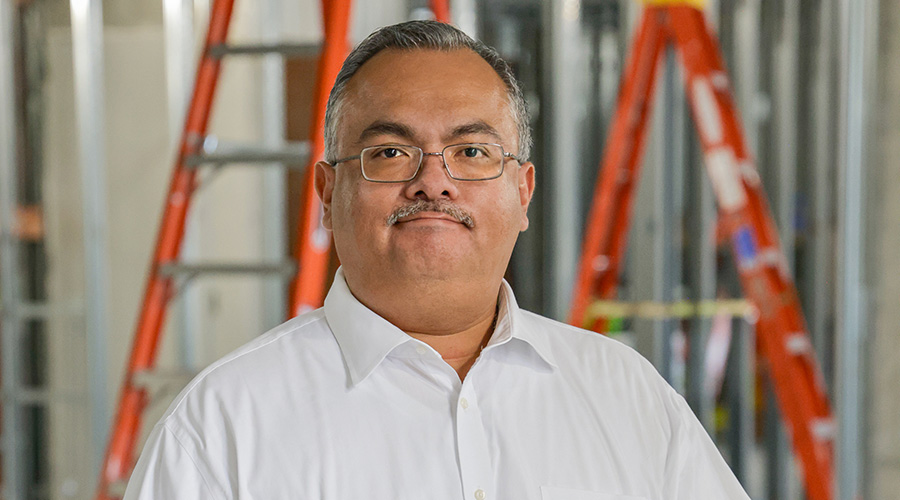Managers Discuss Strategies for Participating in Demand-Response Programs
By Chris Matt, Managing Editor - Print & E-Media
OTHER PARTS OF THIS ARTICLEPt. 1: This Page
*Mike Adams, Project Manager, Engineering Department, Allegheny County Airport Authority, Pittsburgh International Airport
*John Dilliott, Manager, Energy and Utilities, University of California, San Diego
Demand response often is part of a broader discussion on the state of electrical power in the United States. But when broken down to its core, demand response in commercial and institutional facilities requires the expertise of managers and technicians to ensure building systems affected by load-shedding events do not disrupt facility operations.
Can you talk about what led the organization to participate in a demand-response program?
DILLIOTT: It really started once the utilities started advertising that they had these programs (around 2003). It's a balance between power stability and financial incentives. It's a really good program if you never get called (for an event) because you get capacity payments. We had set up our contract so we would never realize any financial penalties. Because we shared the savings with our third party (EnerNoc, an energy-management company), the worst that could happen if we didn't perform, is that we would get zero payment.
ADAMS: (Comverge, an energy-consulting load aggregator) aggregates demand load into groups. They contact a number of different companies and pool together numerous amounts of megawatts into one supply, and they register that load reduction with PJM (a regional organization that coordinates the movement of wholesale electricity). The financial end was the main, driving force, but we like to be sustainable.
What is your role in preparing for and executing demand-response events?
ADAMS: I was the key person responsible for (the required demand-response curtailment test as part of the program), so I organized the planning meetings to talk about what we could do without impacting the airport too much. We went through the maintenance department, electricians, and operating engineers and set up a list of what equipment could be turned off. We had some communication meetings to talk about what the communication plan was to let the airlines and tenants know what was happening beforehand and how they could communicate that to occupants.
DILLIOTT: I am the managerial point of contact for the program. The people that work with me take care of our automated-control system in the building. I have operational control over the central plant and over the people that operate the building-management system. The first thing we had to do was reprogram the whole campus. Where we get most of the savings from is reducing cooling during those (peak-demand) times. We really control the cooling through the thermostats. We have a central energy-management system that controls about 4,000 thermostats.
What is the role of technicians for demand-response events?
ADAMS: We had a key role for the electricians because we ran emergency generators and had some transfer switches to operate. We had some lighting that we could not remotely control so they had some function there. Our operating engineers monitored shutdown. We put some ventilation equipment into unoccupied mode, and they had to monitor that to make sure it came back on right. We have a lot of conveyances, where we convey baggage on belts, so we manually shut some of the baggage belts down. We also shut down moving sidewalks and escalators.
DILLIOTT: Their role is to watch the system. We have it all semi-automated, where one push of a button can change all the set points, but the central plant operations are a little more complicated. The technicians watch the buildings and make sure spaces don't get too hot or too cold, and they get the (hot-cold) calls, should the calls come into our call center.
How do you ensure demand-response events do not interfere with facility operations?
DILLIOTT: We really rely on the feedback from the occupants. A university is an ever-changing landscape inside the buildings, and sometimes spaces that we have programmed for demand response don't work any longer if they move different lab equipment or other things in those areas. So the occupant will contact us and get the word to us to reprogram their space. The critical part for us is getting that e-mail out system-wide so people know something is going on. We send a mass e-mail to the whole campus, which can be 50,000 e-mail addresses. Then we have more of an internal group of building managers — they're not the facility managers — that are the people that work with the occupants in the building. So we have a list of those people, and we'll send out a secondary e-mail to those people.
ADAMS: We set the goal of reducing as much electricity as possible without impacting any flights. That was the No. 1 thing. We set boundaries related to temperature, lighting, passenger movements and crowds. We had a preset list of HVAC shutdowns, with options to restart if needed, and a set number of chillers operating.
What building systems and components are critical to participating in demand response?
ADAMS: To be able to participate, I think the No. 1 thing is that you have real-time electric meter data that is displayed or trended. That's real important. And I think somewhere in the building-automation system, you need a global temperature set point or the ability to adjust your chilled-water temperature globally. Building automation is important. A lighting-control system that enables you to remotely control the lights would be helpful, too, although you can always mobilize the tenants and occupants to turn off the lights.
DILLIOTT: You really have to have variable-volume systems. Constant-volume systems don't really help you because the majority of the energy is moving air around. You really have to have variable-speed drives on your air handlers, and they have to be able to react to dampers closing — that's the critical part. The second part is to have a direct-digital-control system, where you can control multiple buildings and multiple zones from one place so you don't have to physically go to any particular thermostat.
What type of notification does your facility receive before and during demand-response events?
DILLIOTT: (EnerNoc) sends the plant, the plant manager, myself, and one other person an e-mail in the morning saying the event is coming. Once they get called — for our program, it can be as quick as 30 minutes prior to the event — they'll call a landline and then a cell phone for all four people. No matter who responds first, they'll do all three of those things with all four people.
ADAMS: The communication is primarily with the vendor that aggregates our reduction. They have a command center staffed 24/7 that takes the information from PJM, and then they distribute it to the particular customer. PJM communicates, in our case, in this type of program, with our vendor. Then the vendor has a call tree, phone lists, and e-mails that they send out. For the test event, we were notified a week in advance, and then there was another notification one day in advance. Then, on the day of the test event, they notified us via a (voice) message. They describe what the event is. It checks that you received the message and understood it.
What type of savings has the demand-response program generated?
DILLIOTT: It's a four-hour event, so we might save $500 in energy by reducing, so it's not a lot of money that way. It's more the capacity payments where we save. Normally, that's about $50,000-$60,000 a year in capacity payments that we'll get.
ADAMS: For the demonstrated required test, total energy use for this one-hour test had no real impact on our electric bill. The reduction and duration is small, compared to approximately 700 other hours of normal electric use. The demand-response participation is expected to generate revenue.
What suggestions do you have for your peers considering demand response?
ADAMS: Having somebody with the authority to make the decisions (is important). As an example, we had a pre-planning meeting a day ahead (of the test), and I was starting to get a lot of resistance about doing some of the actions I was counting on. I sort of stood my ground and said we've got to meet our load reduction.
DILLIOTT: You have to look at the program and see what kind of monetary benefits that come to you. Most of the time, unless you have a real anomaly of high temperatures, it's money you don't have to work so hard to get. It's ready to go most of the time.
Related Topics:











